How to Ride the Bus Videos
Welcome new riders! Congratulations on taking the first step toward using Tri Delta Transit.
We’ve created a series of short videos to help familiarize you with our service and to assist you in becoming an expert rider. Take a few minutes to view them all. If at any time you feel you need further assistance or information, you can always browse other areas of our web site or call our customer service line at 925-754-4040. Thanks for choosing Tri Delta Transit, and again, welcome!
Note* If you are looking for Clipper Card instructions, please use the tutorials on the Clipper site: Instructions on how to use Clipper Card.
Let’s Get Started!
Click on a topic to open up the video and text instructions.
-

Video 1: Welcome
Riding Tri Delta Transit Buses
-
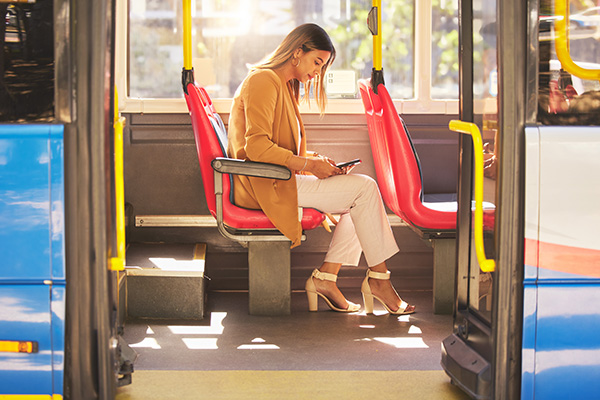
Video 2: Plan Your Trip
Reading the Schedule
-
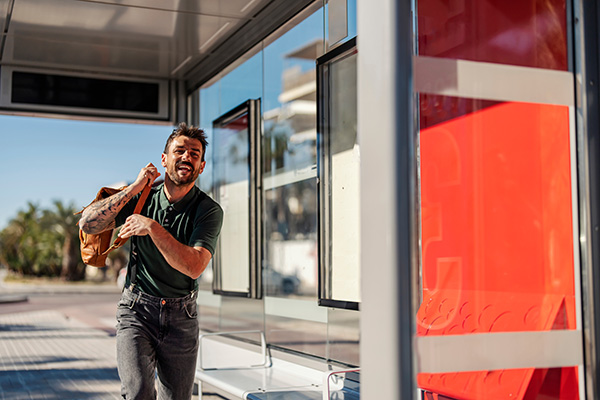
Video 3: Catching The Bus
Waiting, Boarding & Payment
-
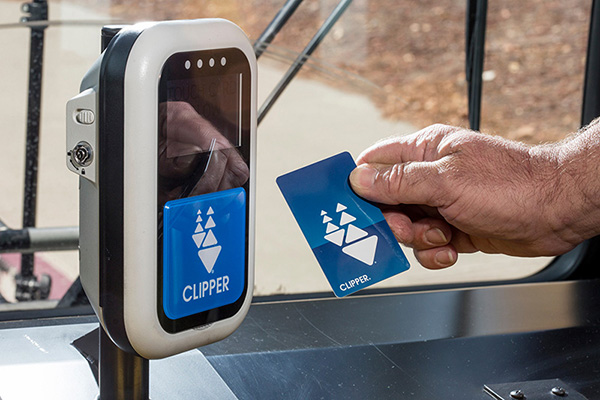
Video 4: Paying Your Fare
Cash, Passes & Clipper
-
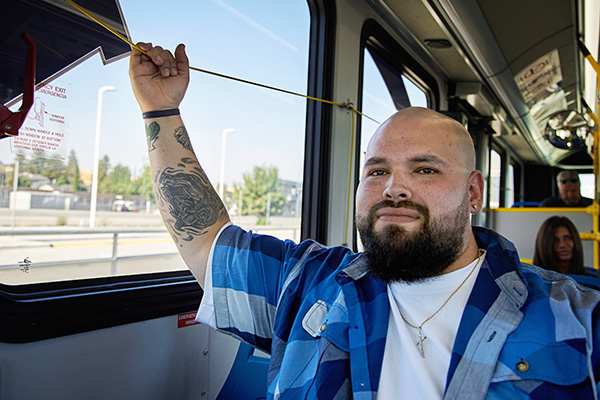
Video 5: Exiting the Bus
Alerting the Driver & Proper Exiting
-
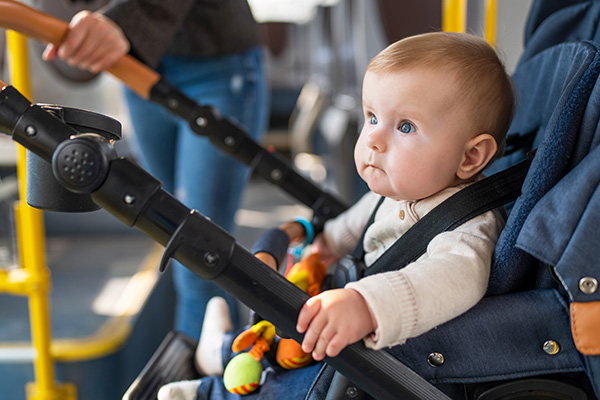
Video 6: Bikes, Wheelchairs & Strollers
Proper Loading & Unloading
-

Video 7: Using The Fare Box
Swiping Your Pass
Video 1: Riding Tri Delta Transit Buses
Tri Delta Transit buses operate every weekday from approximately 3:15 a.m. until 1:15 a.m. and weekends/holidays from 5:20 a.m. until 1:35 a.m. Bus service is available 365 days a year and schedules vary by route. The following services are available:
-
- Local bus service – Daily bus service throughout the cities of Antioch, Pittsburg, Bay Point, Brentwood, Discovery Bay, and Oakley: 16 routes Monday thru Friday and 6 local bus routes on weekends/holidays. All buses are wheelchair accessible and equipped with bike racks.
-
- Limited-stop Express Service – Limited-stop express bus service between Brentwood, Oakley, and Antioch to Pittsburg BART. Only four stops between Brentwood and BART! The fastest option for BART commuters.
-
- Tri MyRide an on-demand, corner-to-corner, shared shuttle service. Take trips that start from anywhere and end anywhere within a single service area. Service areas cover parts of Antioch/Oakley and parts of Pittsburg/Bay Point. Visit www.trimyride.com for service area maps.
-
- Paratransit – Door to door transportation for seniors and qualifying individuals
Video 2: Planning Your Trip/Reading The Schedule
To plan a trip on Tri Delta Transit buses you can use the electronic Transit Trip Planner available on our home page 24 hours a day to create personalized trip plans. Just enter your starting location and where you want to go. The Trip Planner will automatically plan your trip for you. You can also call our route information representatives at 925-754-4040 for personal assistance.
To plan your trip using the printed or online schedules/maps click here for a comprehensive written explanation including how to read the schedule.
Video 3: Catching The Bus
Once you know which bus you need and where you’ll be boarding, it’s time to actually catch the bus. To do so, follow these simple steps.
-
- Arrive at your bus stop at least 5 minutes early and make sure you are at the correct stop. All routes serving each bus stop are listed on the bus stop signs to help you.
-
- Remain at the bus stop until the bus arrives. Don’t wander away.
-
- Have your fare or your bus pass ready before boarding.
-
- When you see a bus approaching, stand at the bus stop and wave to the driver so he knows you want his bus.
-
- Check the head sign above the windshield to verify it is the correct bus. Make sure the route number and direction of travel are correct (i.e., 391 Westbound). Many stops are served by more than one bus route, so make sure you are getting on the right bus.
-
- Board the bus through the front door only and pay the correct fare. If you are paying cash, deposit the fare into the fare box located next to the driver. The fare box accepts both bills and coins. If you did not pay exact fare, ask the driver for a credit ticket.
-
- If you are using a pre-purchased pass, validate or swipe your pass at the fare box when boarding the bus. To pay with your valid Clipper Card, tag your Clipper Card on the Clipper Card reader.
-
- Take your seat and enjoy your ride!
Note* All Tri Delta Transit bus stop locations are listed on the website. On each individual schedule/map page found on Routes & Schedules, you will find a listing for all bus stops along each route. Example: To view all route 391 Westbound bus stops, go to “Local & Express Routes”, select “Routes & Schedules” and then click on route 391 “map & schedule” button. You’ll get a list of all 391 bus stops and you can toggle between westbound and eastbound trips. Click on a stop and a time to get a pop-up of that complete bus run.
Video 4: Paying Your Fare
Fare is required from all passengers on all routes. Tri Delta Transit accepts cash, Clipper, and authorized discount passes.
-
- To pay with cash, place your fare in the fare box located in the front of the bus next to the driver. You can use both bills and coins. Coins can be dropped in the top slot while bills are inserted flat like buying a soda from a vending machine. If you do not have exact fare, ask the driver for a credit ticket.
-
- If you want to purchase a Day Pass on the bus, deposit your fare in the fare box and request a Day Pass from the driver. The Day Pass issued by the fare box will be valid for one day.
-
- To pay with a 20-Ride Pass, validate the 20-Ride pass in the fare box each time you board the bus.
-
- If you have a 31-Day Pass, validate the 31-Day Pass in the fare box the first time it is used. When you board the bus during the 31-consecutive days the pass is valid, swipe the 31-Day Pass in the fare box each time you board the bus.
-
- To pay with your valid Clipper Card, tag your Clipper Card on the Clipper Card reader each time you board the bus.
Note* Tri Delta Transit does not issue transfer slips to connect to other Tri Delta Transit buses. If you need to transfer to another Tri Delta Transit bus to complete your trip, you must have either a valid Day Pass, 31-Day Pass, 20-Ride Pass, or Clipper Card. Otherwise another fare will be required. We do not recommend 20-Ride Passes if you need to transfer buses.
Video 5: Stopping & Exiting The Bus
As you near your destination, get ready to exit the bus. To have the driver stop the bus where you need to exit follow these simple steps:
-
- Be alert for your destination.
-
- About one block away from your destination, signal the operator to stop the bus by pulling the bell cord located above the window or pressing the yellow tape. For your safety, buses will only stop at designated bus stops.
-
- Wait until the bus comes to a complete stop before leaving your seat.
-
- Be sure to gather all of your belongings then exit through the rear doors to allow new passengers to board through the front.
-
- Allow the bus to pull away from the stop before crossing the street at the nearest intersection.
Note* If you use a wheelchair, other mobility device or will be retrieving a bike from the bike rack, exit through the front door. Drivers will assist in unbuckling mobility devices. When retrieving a bike, be sure to let the driver know you will be doing so. Once you have removed your bike, step away from the bus and give the driver a wave to let him know you are all clear. For more information about bikes and wheelchairs on buses, watch “Video 6: Bikes, Wheelchairs & Strollers”
Video 6: Bikes, Wheelchairs & Strollers on Buses
Bikes
Bringing your bike on Tri Delta Transit buses is easy. All buses are equipped with bike racks mounted on the front of the bus. Each rack holds up to two bikes and simple instructions are printed on the front of the rack. If the bike rack is full, you may bring your bike on board the bus at the driver’s discretion. However, you may be required to wait for the next bus.
To use the bike rack, make sure you let the driver know you will be loading your bike. Approach the bike rack then squeeze the handle to lower the rack. Once the rack is lowered, place your bike in the slot with the tires in the correct position (front tire slot is identified on the rack). Raise the support arm over your bike’s front tire. Please place your bike in the inner most slot if available. That’s all there is to it. You’re now ready to board the bus.
To remove your bike from the rack, tell the driver you’ll be removing your bike and exit out the front door. Remove and lower the support arm from the front tire and remove your bike from the rack. If yours is the only bike in the rack and no one is waiting to load another bike, return the rack to its upright position by squeezing the handle and lifting it until it locks into position. This can easily be done with one hand so you can hold on to your bike. Step away from the front of the bus and let the driver know you are through then allow the bus to pull away before you get on your bike.
Whether you’re loading or unloading a bike, watch for traffic and make sure the driver can see you at all times.
Wheelchairs
Tri Delta Transit is committed to making public transportation accessible to all people including those with disabilities. All buses are equipped with a ramp or a lift to assist passengers using mobility devices with boarding the bus. Mobility devices must meet ADA guidelines to ride Tri Delta Transit buses. Once on board, proceed to the wheelchair area in the front of the bus and the driver will secure your chair before proceeding on route. The driver will also assist you when its time to get off the bus.
Mobility devices are not required to use the bus ramps and lifts. Lifts are available to all passengers who need extra assistance upon request.
Strollers
Tri Delta Transit is proud to be the first bus operator in America to designate a special area on public buses for passengers using strollers. To board the bus with a stroller, ask the driver to deploy the ramp or lift to assist you with boarding. Once on board, proceed to the stroller area located just behind the wheelchair area. Children may remain in the strollers while in this area. If the stroller area is full, strollers may occupy the wheelchair area. However, if a wheelchair passenger boards the bus and needs that space, the stroller must be folded and placed out of the aisle. Stroller areas are located on all 40-foot buses and can accommodate two strollers.
Video 7: How To Use The New Fare Box
Tri Delta Transit sells magnetic stripe passes that are issued and accepted by the fare box. The fare box allows access to multiple types of passes, faster boarding and fewer ticket-related problems. To learn how to use the fare box, watch the video.

